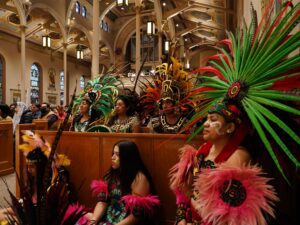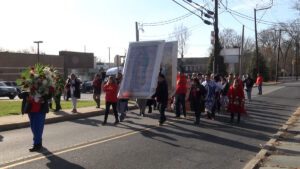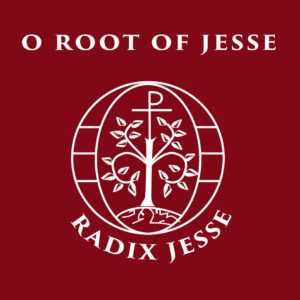SCRANTON – Nearly three years after all K-12 schools in Pennsylvania were forced to close because of the COVID-19 pandemic, there has been significant attention on the impact of that decision. Dozens of national studies have concluded the closure of schools in Pennsylvania and many other states had a negative effect on student learning.
An analysis of student assessment data from the 19 Catholic Schools in the Diocese of Scranton, however, shows that despite the many challenges and obstacles posed by the pandemic, there has been no significant “learning loss” in the Diocesan School System.
Data released by the Diocesan Office for Catholic Schools shows its students have continued to show overall academic growth in the core subjects of reading and mathematics since the fall of 2019.
Kristen Donohue, Diocesan Secretary for Catholic Education and Superintendent of Catholic Schools, acknowledged teaching students through the pandemic was a challenge, but credits educators and administrators for making sure students received the best education possible.
“We had a diocesan-wide professional development day planned days prior to the school closure. Upon learning of the potential for closure, we quickly changed the focus of that day. Administrators and teachers used this day to creatively design remote instruction. These dedicated professionals approached this surreal task with a keen focus on doing whatever it takes to provide new instruction remotely for our students,” Donohue said. “I say with immense pride and respect, we closed our buildings in compliance with the state directive Friday, March 13, 2020, and started teaching remotely Monday, March 16, 2020. Our school families were a tremendous piece of the success, too. As a result of true collaboration with the focus on what is best for our students, we never skipped a beat.”
All schools in the Diocese of Scranton were virtual from March – June 2020. In-person learning returned as schools reopened in August 2020 with an option for virtual learning, if desired by the family. In-person learning continued full-time again in August 2021 in all schools and virtual learning was reserved for those quarantined due to COVID-19.
“As we navigated the pandemic years, we recognized the importance of working as a team. The continued academic growth and progress that we see in our data today is the direct result of the tireless efforts of our administrators, teachers, students, and school families who all, despite the setbacks of the pandemic, did not lose sight of the importance of education. I am humbled and blessed to work with such an amazingly talented and devoted group.”
ASSESSMENT DATA SHOWS CONTINUED GROWTH
In the fall of 2019, right before the height of concern over COVID-19, students in the Diocese of Scranton began taking NWEA (Northwest Evaluation Association) Assessments.
The assessments provide educators with valuable data on each student by allowing teachers the ability to measure a student’s growth over time. The data provides critical information that helps educators understand each student’s skills and abilities.
“NWEA data helps me pinpoint specific skills within my content area that I may need to focus on for a particular student,” Debbie Smith, a seventh and eighth grade Literature teacher at Our Lady of Peace School in Clarks Green, said. “NWEA reporting also illustrates trends and areas of strengths of students to help me build upon their skills. This is invaluable in the way I tailor my instruction.”

NWEA Assessments allow educators to track the growth of students as they progress each year by grade. Scores can also be compared to a “national achievement norm.” With several years of NWEA Assessment data now available, the Diocese of Scranton is able to analyze the growth and achievements for students as they have progressed over the course of the pandemic.
While each school can produce its own individualized data, for this overall analysis, all Catholic schools in the Diocese of Scranton will be brought together as one entity.
In math, Diocesan Catholic school second graders, who would have been in Kindergarten in 2020, showed continuous growth in assessments from the fall 2020, through spring and fall 2021, followed by both spring and fall 2022. Likewise, similar results were achieved in reading – although there was a very small drop (less than one point) in overall assessment scores between spring 2021 and fall 2021.

In all assessments taken by current second graders, Diocesan students scored above the NWEA’s national achievement norm.
Similar results showing consistent growth in reading and math can be seen across all other grade levels. In some instances, for example, fifth, sixth and seventh grades, there was a slight dip in scores between the 2021 spring and fall assessments, but very typical for the fall as students are returning from summer break. Each grade level assessment scores quickly rebounded by spring 2022.
WHY HAVE DIOCESAN SCHOOLS NOT EXPERIENCED SIGNIFICANT LEARNING LOSS?
Holly Bradley, who has taught second grade for the last three years at Saint John Neumann Elementary School in Williamsport, was not surprised by the consistent growth seen in the Diocese of Scranton Catholic School System.
She consistently uses NWEA Assessments to individualize instruction to the students in her classroom and knows many of her fellow Catholic school educators do the same.

“I can challenge the kids that need to be challenged and the kids that need reinforcement of certain skills, I can do that to make sure that they succeed,” Bradley explained.
Alisia McNamee, principal of both Saint John Neumann Elementary and Jr./Sr. High School, believes one of the main reasons why Diocesan data shows continued growth, is that in the early days of virtual learning her school made an intentional decision to introduce new information instead of simply doing review of previously learned material.
“We intentionally did not choose to do reinforcement for the fourth quarter. We felt confident that our students were prepared and able to move on with learning new information,” she explained.
McNamee said her teachers did significant planning to make sure everyone succeeded.

“To do a simple review for an eight-week period would have been a huge disservice to our students. That was simply not sufficient for us. That would have been a disservice to our students,” she added. “Our students were ready and needed to move forward.”
AN EXAMPLE OF EXCELLENCE
When students returned to Saint Clare/Saint Paul School in Scranton in August 2020, they traded Google classroom and Zoom meetings for six foot social distancing and mandatory masking.
Third grade teacher, Rhonda Wassil, had another challenge. Her classroom needed to move to the school auditorium because there were too many children to ensure six foot spacing in her regular space.
Wassil embraced the change and the additional space – setting up six different math groups based on the NWEA assessment data – so that students could be properly challenged in areas like geometry, money and even pre-algebra.
“I had children working at different levels,” Wassil explained. “Within each station, I had all the differentiated levels there. Once they mastered a station, they had the opportunity to move on.”
Kara Ware, principal of Saint Clare/Saint Paul School, was particularly impressed by how engaged the students became in the math stations. She praised Wassil for taking NWEA data to shake-up what was taking place in her classroom.
“It was the kind of environment that any administrator would hope and pray to have in one of your classrooms,” Ware said. “The proof was in the pudding because by the time we got to the winter NWEA Assessments for 2021, the data went right through the roof. The kids’ scores went right through the roof.”
Besides focusing on the essentials of education, Wassil also wanted to make sure the students didn’t miss other important learning experiences. Her third grade class traditionally goes to the Philadelphia Zoo for a field trip after doing a science project about endangered animals.

Sensing the students’ disappointment in not being able to take the trip, Wassil took action once again.
“Through Google slides, I created a whole trip to Philadelphia. They not only got to go to the Philadelphia Zoo virtually, they were able to go to Betty Ross’ house, Independence Hall, the Liberty Bell and there were activities for them to do in this presentation, that they could interact with and submit back to me,” she said. “They had a ball!”
TEACHERS ONE OF THE ‘HEROES’ OF THE PANDEMIC
Brittany Haynos-Krupski, principal of All Saints Academy in Scranton, said teachers deserve most of the credit and recognition for the continued growth of Catholic school students.
“My faculty was amazing. They said, ‘we’re going to do this’ and they took on the task that no other has done before,” she said.
Working overtime to plan, send home lessons and interact with families, Haynos-Krupski said her teachers were on top of every angle that needed to be addressed.
“Realistically, the students never missed even a day,” she said.
Amy Layaou, a first grade teacher at Our Lady of Peace School, said she doesn’t view herself as a ‘hero’ of the pandemic. She said teachers simply adapted to the challenges of the pandemic to ensure student learning continued.
“We should recognize the efforts of the students, parents and other family members as we all worked together to fulfill the common goal of education,” Layaou explained.
Layaou’s principal, Ann D’Arienzo, said she could never say enough about how her staff met the challenges of the pandemic to ensure educational growth continued.
“They are the ones that did the planning, did the work, pushed out the instruction, analyzed the NWEA data and worked in their own professional learning communities,” she said.
Because of the success Catholic schools in the Diocese of Scranton, many schools are currently seeing an increase in enrollment.
“It didn’t take long for the word to get out on the street, what was occurring here at this particular school,” Ware explained. “If you are transferring into Saint Clare/Saint Paul School, you might be a grade level behind in mathematics, reading, or both, but because of the NWEA Assessments we are going to meet you were you are and get you where you need to be.”
“Because of NWEA, no one knows your kids the way we do,” D’Arienzo added.















